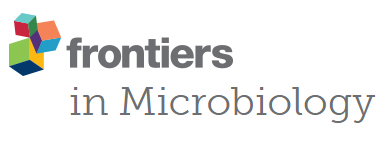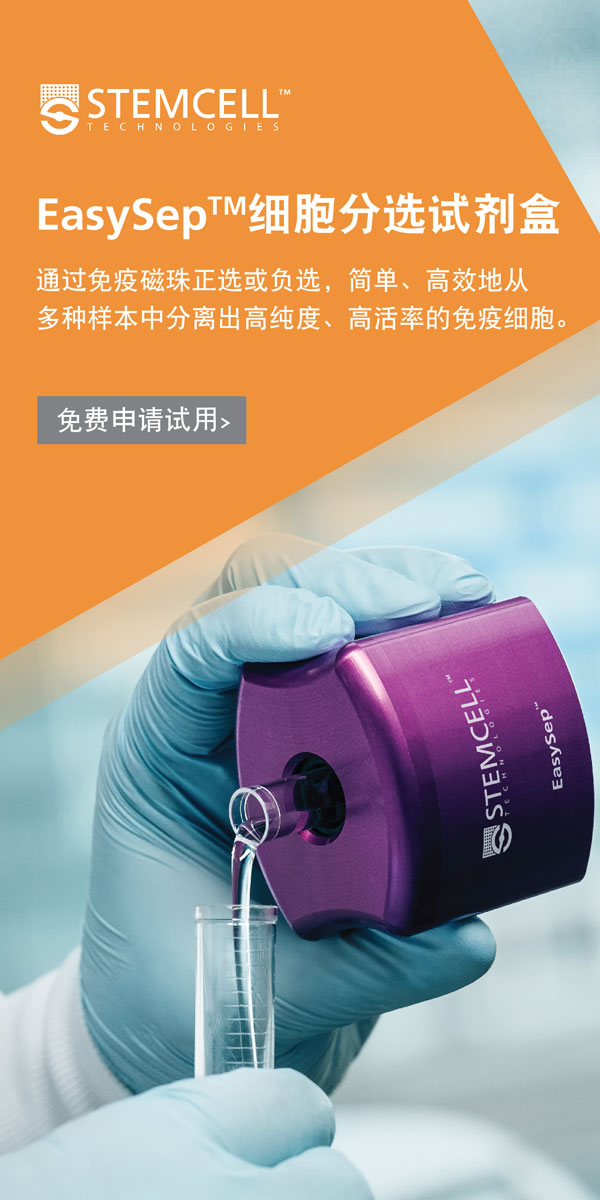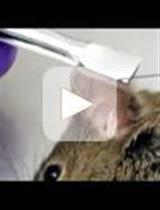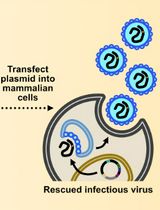- EN - English
- CN - 中文
Preparation of Red Palm Weevil Rhynchophorus Ferrugineus (Olivier) (Coleoptera: Dryophthoridae) Germ-free Larvae for Host-gut Microbes Interaction Studies
用于宿主肠道微生物相互作用研究的红棕象甲(稻铁甲虫)(鞘翅目:椰象鼻虫科)无菌幼虫的制备
发布: 2019年12月20日第9卷第24期 DOI: 10.21769/BioProtoc.3456 浏览次数: 5788
评审: Satyabrata NandaAnonymous reviewer(s)
Abstract
Red palm weevil (RPW), Rhynchophorus ferrugineus Olivier, is a devastating pest of palm trees worldwide. RPW gut is colonized by diverse bacterial species which profoundly influence host development and nutritional metabolism. However, the molecular mechanisms behind the interactions between RPW and its gut microbiota remain mostly unknown. Antibiotics are usually employed to remove gut bacteria to investigate the impact of gut bacteria on insect fitness. However, administration of antibiotics cannot thoroughly remove gut bacteria for most insect species. Therefore, establishing germfree (GF) organisms is a powerful way to reveal the mutual interactions between gut bacteria and their insect hosts. Here, we describe a protocol to generate and maintain RPW GF larvae, being completely devoid of gut bacteria in laboratory. RPW GF larvae were established from the dechorionated fresh eggs which were reared on the sterilized artificial food under axenic conditions. The establishment of GF larvae set a solid foundation to deeply elucidate the molecular mechanisms behind the interactions between RPW and its gut microbiota.
Keywords: Rhynchophorus ferrugineus (红棕象甲)Background
Red palm weevil, Rhynchophorus ferrugineus (Olivier) (Coleoptera: Dryophthorodae), is one of the most noxious pest of palm trees in the world (Li et al., 2009; Ju et al., 2011; Al-Dosary et al., 2016; Peng et al., 2016). It is native to south Asia and Melanesia, but recently it has dramatically spread to European, African, some American and other Asian countries (OEPP/EPPO, 2008; Shi et al., 2014). The larva of RPW is the main destructive agent which feed on tender tissues and sap in the trunk from the apical growing point of palms. RPW larvae complete its entire developmental time inside the palm trunk until newborn adults fly out for locating new oviposition sites (Kaakeh, 2005; OEPP/EPPO, 2008; El-Mergawy and Al-Ajlan, 2011). The concealed infestation behavior of the pest makes its control more challenging. Currently, the control measures against this insect pest include the use of synthetic insecticides, phyto-sanitation, pheromone-based mass trapping and releasing some biological control agents, such as entomopathogenic fungi, bacteria and nematodes (Murphy and Briscoe, 1999; Faleiro, 2006; Mazza et al., 2014; Pu and Hou, 2016). However, due to the occurrence of pesticide resistance and limitations of other control measures, it is urgent to develop some sustainable, eco-friendly and economical manage strategies that can effectively protect palm trees from this insect pest.
Like mammals, insects live in the symbiotic associations with gut microbiota which play thecritical roles in many host physiological processes, containing development, digestion and detoxification, immunity and chemical communication (Douglas, 2009, 2010 and 2015; Engel and Moran, 2013). Gut bacteria are the excellent agents for paratransgenesis by using an engineered symbiont to express some specific bioactive molecules that impair insect fitness to achieve pest control (Engel and Moran, 2013). Therefore, elucidating the interactions between insect pests and their symbiotic microbes could provide some important implications for the development of novel pest management tactics (Butera et al., 2012; Crotti et al., 2012).
Owing to its enormous economic and environmental losses, RPW has attracted great attention in recent years. Recently, some preliminary investigations have deciphered gut bacterial components of RPW larvae and adults. It has been determined that RPW gut is colonized by bacteria mainly from Enterobacteriaceae, Lactobacillaceae, Acetobacteriaceae, Entomoplasmataceae, Enterococcaceae and Streptococcaceae (Jia et al., 2013; Tagliavia et al., 2014; Montagna et al., 2015; Muhammad et al., 2017). Moreover, we have discovered that a secretory protein, RfPGRP-LB, and the NF-ĸB like transcription factor, RfRelish, regulate gut immunity to modulate the homeostasis of RPW gut microbiota (Dawadi et al., 2018; Xiao et al., 2019). Furthermore, it has also been found that gut microbiota of RPW can affect its host growth and development by modulating its nutrition metabolism (Muhammad et al., 2017; Habineza et al., 2019). Unfortunately, we found gut bacteria of RPW larvae cannot be removed thoroughly by the administration of antibiotic cocktails (Muhammad et al., 2017). Increasing evidence strongly suggest that GF animal models are one of pivotal tool for dissecting the crosstalks between animal and their gut microbiota (Grover and Kashyap, 2014; Koyle et al., 2016; Kietz et al., 2018). Therefore, to investigate the role of residential gut microbiota on RPW physiology, RPW GF larvae were generated to decipher the host-gut bacteria interplays. Compared with the administration of antibiotics, our protocol in the report can successful and easily to establish and maintain RPW GF larvae. It is also easy to generate the gnotobiotic RPW larvae with specified gut bacterial species.
Materials and Reagents
- Perforated plastic bottles (330 ml, 70mm Ø, 107mm height; Jiafeng Horticultural Products Co. Ltd., Chongqing, China)
- Conical flask
- Petri dishes (90 mm Ø, Yancheng Huida Medical Instruments Co. Ltd., Jiangsu, China)
- Paintbrush (1 cm width), used to collect the fresh eggs
- 0.22 µm syringe filters (Pall Corporation, USA)
- Spatula (20 cm long and 4 cm wide at the tip)
- PCR tubes (Biosharp Life Sciences, Hefei, China)
- 1.5 ml microcentrifuge tubes (Biosharp Life Sciences, Hefei, China)
- Metal sieve with pore size 60 µm (Sigma-Aldrich Co. Ltd., Switzerland, catalog number: Z289744)
- Aluminum foil
- Parafilm (Bemis PM-996, USA)
- 10 ml sterile syringes (Hamilton® Syringes, Sigma-Aldrich Co. Ltd., Switzerland)
- Filter paper (90 mm Ø, Fuyang Special Paper Industry Co. Ltd., Hangzhou, China)
- Sugarcane, Saccharum sinensis Roxb. (Zhangzhou City, Fujian Province, China)
- Primers for amplifying the bacterial 16S rRNA gene (27F: 5ʹ-AGAGTTTGATCATGGCTCAG-3ʹ, 1492R: 5ʹ-TACGGYTACCTTGTTACGACTT-3ʹ) (Sangon BioTech. Co. Ltd., Shanghai, China)
- Trans2K® DNA marker (Transgene BioTech. Co. Ltd., Beijing, China)
- Distilled water
- Ethanol (Sigma-Aldrich, CAS number: 64-17-5)
- Sodium hypochlorite (NaClO) (Sigma-Aldrich, CAS number: 7681-52-9)
- Antibiotics
- Kanamycin (Sigma-Aldrich, CAS number: 70560-51-9)
- Tetracycline (Sigma-Aldrich, CAS number: 64-75-5)
- Gentamycin (Sigma-Aldrich, CAS number: 1405-41-0)
- Erythromycin (Sigma-Aldrich, CAS number: 114-07-8)
- Kanamycin (Sigma-Aldrich, CAS number: 70560-51-9)
- Tryptone (OXOID, catalog number: 2406419)
- Sodium chloride (NaCl) (Sigma-Aldrich, CAS number: 746398)
- Potassium chloride (KCl) (CAS number: 7447-40-7)
- Anhydrous sodium phosphate dibasic (Na2HPO4) (CAS number: 7558-79-4)
- Hydrochloric acid (HCl) (CAS number: 7647-01-0)
- Monopotassium phosphate (KH2PO4) (CAS number: 7778-77-0)
- Yeast extract (CAS number: 8013-01-2)
- Agar (CAS number: 9002-18-0)
- Sodium hydroxide (NaOH) (CAS number: 221465)
- DNA extraction kit (DNeasy blood and tissue kit, Qiagen, Germany)
- 6x DNA Loading buffer (TRANS®, Transgene BioTech. Co. Ltd., Beijing, China)
- 0.5x TAE buffer (Tris-Acetate EDTA)
- 2x Taq PCR Mastermix (Tiangen Biotechnology, Beijing, China)
- Tris-HCl (Solarbio Life Sciences Co. Ltd., Beijing, China)
- Glacial acetic acid (CAS number: 64-19-7)
- Ascorbic acid
- Sucrose
- Casein
- Corn flour
- Avicel
- Cholestrol
- Choline chloride
- Inositol
- Potassium sorbate
- Sodium p-hydroxybenzoate
- Disodium EDTA (CAS number: 6381-92-6)
- Agarose (Transgen. Biotech. Co. Ltd., Beijing, China)
- TRANS® Ethidium bromide Gel Stain (Transgen. Biotech. Co. Ltd., Beijing, China)
- 10x PBS stock solution (see Recipes)
- Antibiotic stock solution (see Recipes)
- LB agar medium (see Recipes)
- 10x TAE stock solution (see Recipes)
- The artificial food for RPW larvae (see Recipes)
Equipment
- Heal Force safe-1200LC biosafety cabinet (Heal Force Bio-meditech Holdings Co. Ltd., Shanghai, China)
- Autoclave (Shennan LDZF-75KB-II, China)
- SCIENTZ-48 tissue lyser (Ningbo Scientz Botecthnology Co., Ltd, China)
- Haier refrigerator (Haier Co. Ltd., Qingdao, China)
- Scissors (World Precision Instruments, Sarasota, USA)
- Pointed tip tweezers (3.9 x 3.0 x 1.0 inches, World Precision Instruments, Sarasota, USA)
- Forceps with curved flat rounded tips (1.65 mm x 0.05 mm x 120 mm, width x thickness x length, World Precision Instruments, Sarasota, USA)
- Yiheng® Incubator (500 x 460 x 800 mm, Shanghai Yiheng Instruments Co. Ltd., China) was employed to rear the axenic larvae (The conditions were set at 37 °C and dark for 24 h)
- BIO-RAD T100TM PCR thermocycler (Bio-Rad Co. Ltd., USA)
- Eppendorf 5804 R Centrifuge (Eppendorf Co. Ltd., Germany)
- Gel electrophoresis unit (Liuyi Instruments Co. Ltd., Beijing, China)
- Nikon® Stereomicroscope (Nikon Co. Ltd., Japan)
- Saifu ZRX-260 incubator for maintaining the RPW lab population (260 L, Ningbo Experimental Instrument Co. Ltd, China)
- Nanodrop 1000 (Thermo SCIENTIFIC, USA)
- Microwave (Midea Co. Ltd., Guangdong, China)
- Magnetic stirrer (Ronghua Experimental Instrument Co. Ltd., Jintan, Jiangsu, China)
- BSA124S Electric balance (Sartorius Co. Ltd., Germany)
- UV transilluminator (Peiqing Science and Technology Co. Ltd., China)
- Laminar hood (Heal Force Safe-1200LC)
Software
- IBM SPSS Statistics (22.0)
Procedure
文章信息
版权信息
© 2019 The Authors; exclusive licensee Bio-protocol LLC.
如何引用
Muhammad, A., Habineza, P., Hou, Y. and Shi, Z. (2019). Preparation of Red Palm Weevil Rhynchophorus Ferrugineus (Olivier) (Coleoptera: Dryophthoridae) Germ-free Larvae for Host-gut Microbes Interaction Studies. Bio-protocol 9(24): e3456. DOI: 10.21769/BioProtoc.3456.
分类
微生物学 > 微生物遗传学 > 诱/突变
免疫学 > 宿主防御 > 综合
微生物学 > 微生物-宿主相互作用 > 体内实验模型
您对这篇实验方法有问题吗?
在此处发布您的问题,我们将邀请本文作者来回答。同时,我们会将您的问题发布到Bio-protocol Exchange,以便寻求社区成员的帮助。
Share
Bluesky
X
Copy link














